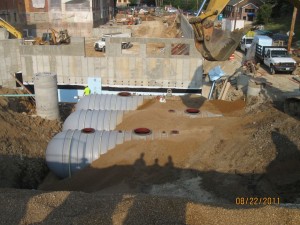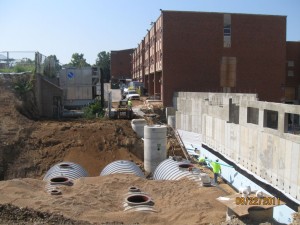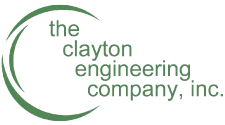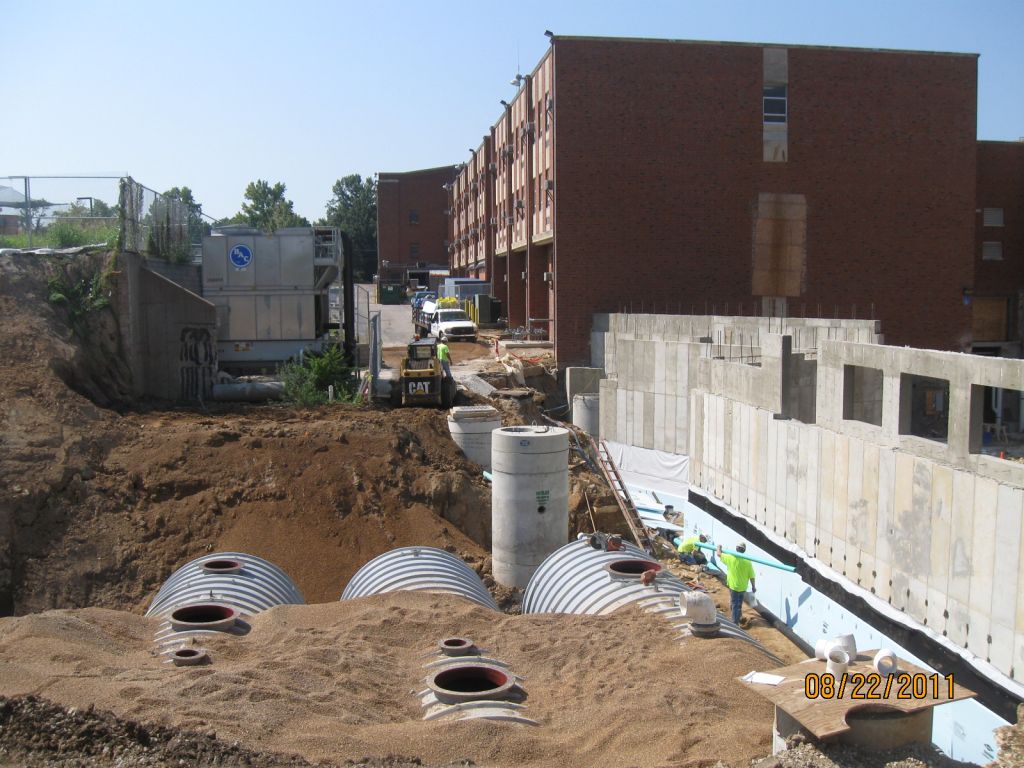 The Webster Groves School District is constructing a large building addition onto their high school that proved opportune for an innovative civil design implementation by Clayton Engineering. Slated to be completed in late 2012, the first known large scale rainwater harvesting system in the St. Louis area has been designed, approved, and installed, through a collaborative effort by The Clayton Engineering Company and the Webster Groves High School project plumbing engineer, John Muschong,P.E. Due to the small site area, the underground rainwater harvesting system fit the school district’s goals for green solutions perfectly.
The Webster Groves School District is constructing a large building addition onto their high school that proved opportune for an innovative civil design implementation by Clayton Engineering. Slated to be completed in late 2012, the first known large scale rainwater harvesting system in the St. Louis area has been designed, approved, and installed, through a collaborative effort by The Clayton Engineering Company and the Webster Groves High School project plumbing engineer, John Muschong,P.E. Due to the small site area, the underground rainwater harvesting system fit the school district’s goals for green solutions perfectly.
The St. Louis Metropolitan Sewer District (MSD) observes and maintains public sewer systems in the metropolitan area. Funding for MSD is provided through storm and sanitary sewer bills. MSD oversees and inspects new construction of public storm and sanitary sewers. With this particular BMP (Best Management Practice) design, no guidelines or design specifications were in place at the time. MSD observed the entire process so each detail could be used for future review and design guidelines.
The design of the rainwater harvesting system directly reflects the water quality treatment characteristics and environmental sustainability national agencies require.
Benefits of Rainwater Harvesting include:
- Avoid increased sewer bill surcharges by minimizing run-off
- Savings on local water bills
- Runoff will be used for the benefit of site maintenance & irrigation rather than increasing the volume of local drainage systems
- Available immediately for fire sprinkler systems
- The system can reduce erosion
- Grey water system use in buildings
 For more advanced applications that include treatment for purification during periods of scarce rain and moisture accumulation when the harvesting system could be converted to normal water use.
For more advanced applications that include treatment for purification during periods of scarce rain and moisture accumulation when the harvesting system could be converted to normal water use.
The Webster Groves High School system includes a design for irrigation harvesting treatment and reuse on and around the property for irrigation systems. This system goes beyond the traditional water harvesting in that it captures more than just roof runoff. This approach was used to satisfy MSD requirements for water quality and runoff reduction for this project. The storm water is collected from the roof and around the school property through a series of traditional collection methods.
Once the water is collected, it is directed into the Hydrodynamic Separator (HDS) unit, which acts as a the Pre-Treatment, or “flow-through structure with a settling or separation unit to remove sediments and other pollutants (as defined by EPA fact sheet 832-F-99-017)”. The water harvesting system is considered a main water quality device at the school by including a decanting process as a function of its design. Decanting is the process of separating water from oils, chemicals or other sludges/ sediments that have accumulated during the runoff process. This is a necessary process for the re-use of rainwater to keep pumps and downstream systems working properly. Also, it is the second filtration process in this particular rainwater harvesting system since it will be used for a higher volume than an ordinary harvesting system-even more so than other commercial applications. The decanting process is achieved through a series of tanks where the water is internally “treated” then the sediments that precipitate to the bottom are regularly removed during normal maintenance procedures while the newly filtered water is pumped out of the tanks for use as needed.
 During the winter months, the water harvesting system will be used to pump the treated storm water back into the storm sewer systems since the upstream HDS unit will have already pre-treated the runoff. The system is fully functional year round. With the design and implementation of this new system, The Clayton Engineering Company has maintained the civil engineering and design edge that’s needed to advance in the modern world. We ask that you please consider the world around you while planning your next major project, commercial development or even home upgrade and consider us as your personal design professionals.
During the winter months, the water harvesting system will be used to pump the treated storm water back into the storm sewer systems since the upstream HDS unit will have already pre-treated the runoff. The system is fully functional year round. With the design and implementation of this new system, The Clayton Engineering Company has maintained the civil engineering and design edge that’s needed to advance in the modern world. We ask that you please consider the world around you while planning your next major project, commercial development or even home upgrade and consider us as your personal design professionals.
B. Austin DeSain, LSIT, CST II
Erik J. Staley, P.E.

